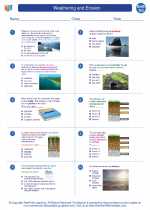Solar System
The solar system consists of the Sun and all the objects that orbit it, including planets, moons, asteroids, comets, and meteoroids. The Sun is a star, and it is by far the most important source of energy for life on Earth.
The Sun
The Sun is a massive, glowing sphere of hot gas that generates heat and light through nuclear fusion. It is located at the center of the solar system and comprises more than 99% of the total mass of the solar system. The Sun's energy is essential for supporting life on Earth and driving the Earth's climate and weather systems.
Solar Energy
Solar energy is the radiant light and heat from the Sun that is harnessed using a range of ever-evolving technologies such as solar heating, photovoltaics, solar thermal energy, solar architecture, and artificial photosynthesis. This energy can be converted into electricity or used directly for heating, cooling, and lighting buildings, as well as for various industrial and commercial applications.
Solar System Exploration
Over the years, there have been significant efforts to explore the solar system. Several spacecraft, including Voyager, Cassini, and Juno, have been sent to study and photograph planets, moons, and other celestial bodies. These missions have provided valuable insights into the composition, geology, and atmospheric conditions of different solar system objects.
Study Guide
- What is the solar system made up of?
- Describe the Sun and its importance to the solar system.
- Explain how solar energy is harnessed and utilized.
- Discuss the significance of solar system exploration and mention some spacecraft missions.
[Solar] Related Worksheets and Study Guides:
.◂Earth Science Worksheets and Study Guides High School. Weathering and Erosion

 Worksheet/Answer key
Worksheet/Answer key
 Worksheet/Answer key
Worksheet/Answer key
 Vocabulary/Answer key
Vocabulary/Answer key
 Vocabulary/Answer key
Vocabulary/Answer key
 Vocabulary/Answer key
Vocabulary/Answer key
